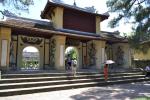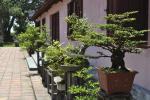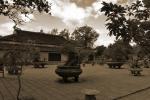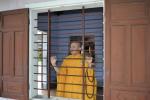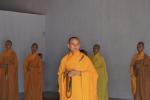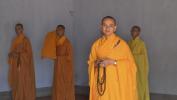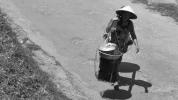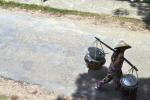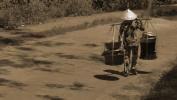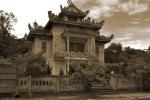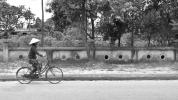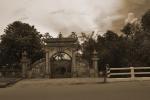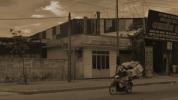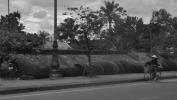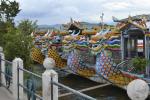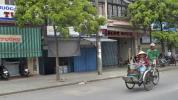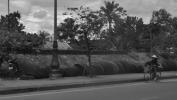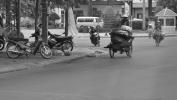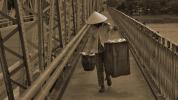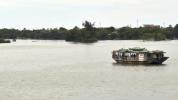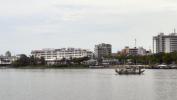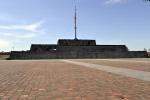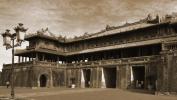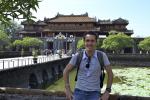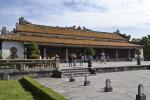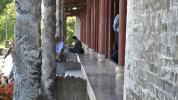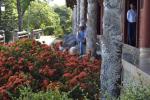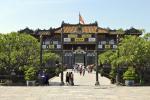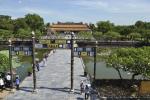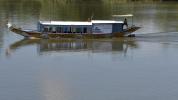HUE CITY
This year the Vietnamese Futsal National Tournament is played in Hue city, and has given me the possibility to discover this magnificent place……….
Hue is located in Thua Thien prefecture and is in the central part of Vietnam. Located 660 km from Ha Noi and 1080 km from Saigon, Hue has always been considered the fulcrum of Vietnam's two rice baskets, the Red river delta and the Mekong delta.
Although Hue has sustained much damage from natural disasters and wars, the city and most of the architecture remain. As a capital city, Hue is relatively young since the Nguyen dynasty only ended some 50 years ago (1802-1945). Of the ancient capitals in Vietnam, Hue is the only one that still has the intact appearance of a complex of the monarchic capital consisting of walls, palaces, and royal tombs. Consequently, Hue is among Vietnam's most valued national treasure in terms of history and heritage.
On December 11, 1993, UNESCO's Director General, Federico Mayor acknowledged the Complex of Monuments of Hue to be a World Culture Heritage.
Unfortunately the city of Hue is also famous for a terrible massacre the involved the Hue’s cityzens in 1968……
In the darkness of the 1968 Tet's Eve, North Vietnamese Communist Army units conducted a surprise attack at Hue City, while the two sides were in a truce that had been agreed upon previously. South Vietnamese Army units defending the city were not in good positions to fight as they expected that the enemy would abide by their 4-day cease-fire promise, as they did in the preceding years. On the first day of the new year - the Year of the Monkey - Hue City streets were filled with NVA soldiers in baggy olive uniforms and pithy hats.
The communist cadres set up the provisionary authorities. The first thing they did was call all SVN soldiers, civil servants of all services, political party members, and college students, to report to the 'revolutionary people's committee.' Those who reported to the communist committee were registered in control books then released with promise of safety.
After a few days, they were called to report again, then all were sent home safe and sound. During three weeks under NVA units' occupation, they were ordered to report to the communist committee three or four times. In the late half of January 1968, the US Marines and the South Vietnamese infantry conducted bloody counterattacks and recaptured the whole city after many days of fierce fighting that forced their enemy to withdraw in several directions.
Meanwhile, those who were called to report the last time to the communist authorities disappeared after the Marines and South Vietnamese Army units liberated Hue. Most of the missing were soldiers in non-combat units and young civilians. No one knew their whereabouts.
In late Feb.1968, from reports of Vietnamese Communist ralliers and POWs, the South Vietnamese local authorities found several mass graves. In each site, hundreds of bodies of the missing were buried. Most were tied to each other by ropes, electric wires or telephone wires. They had been shot or beaten or even stabbed to death.
The mass graves shocked the city and the whole country. Almost every family in Hue has at least one relative, close or remote, who was killed or still missing. The latest mass grave found in the front yard of a Phu Thu district elementary school in May 1972, contained some two hundred bodies under the sand. They had been slaughtered during one-month occupation of an NVA unit. Sand left no sign of a mass grave below until a 3rd-grader dug the ground rather deep for a cricket.
Besides more than two thousand persons whose deaths were confirmed after the revelation of the mass graves, the fate of the others, amounted to several thousands, are still unknown.



